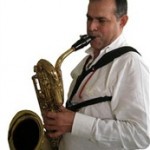

In some part of the Colombian Caribbean, where music and dreams intersect, a call to enjoyment occurs, a proclamation of millo flute and llamador drum, a dialogue between cane and leather, half-blood longings, intimate America and rebellious Africa united by the cumbia music. In the square, a natural point for sharing, people coming from different parts of the port, gather attracted by curiosity and the certainty that the event that is going to take place there will be the exit door to their routine lives.
The musicians warm up, they look at the audience timidly, when their director, in a liberating gesture, unleashes a polyphonic avalanche that overwhelms the silence; joy takes every corner, the sounds of the fandango rhythm reign.
As in fire, light, and heat, visual and auditory harmonies merge upon arrival of the fandango female dancers adorned with their colored smiles, and icacos in their hair; the gazes are captured by those and the ears simultaneously attracted by a calm, contrasting melody, recalling a great ballroom dance.
Suddenly, magic happens, couples intertwine and are led in an infinite circle of light and flirtation, souls that float on the rhythmic sway of tradition.
The night has passed, and its dark mantle begins to be pierced with light; the end begins, everyone knows it, they must withdraw, not before leaving the last breath. The heartbeat quickens like the beat of an alegre drum on the puya rhythm; the euphoria is at its highest point and with it the music; dawn and farewell, inseparable.
Exhausted, ecstatic, the people of the port return, one by one, to their home to await a new proclamation.